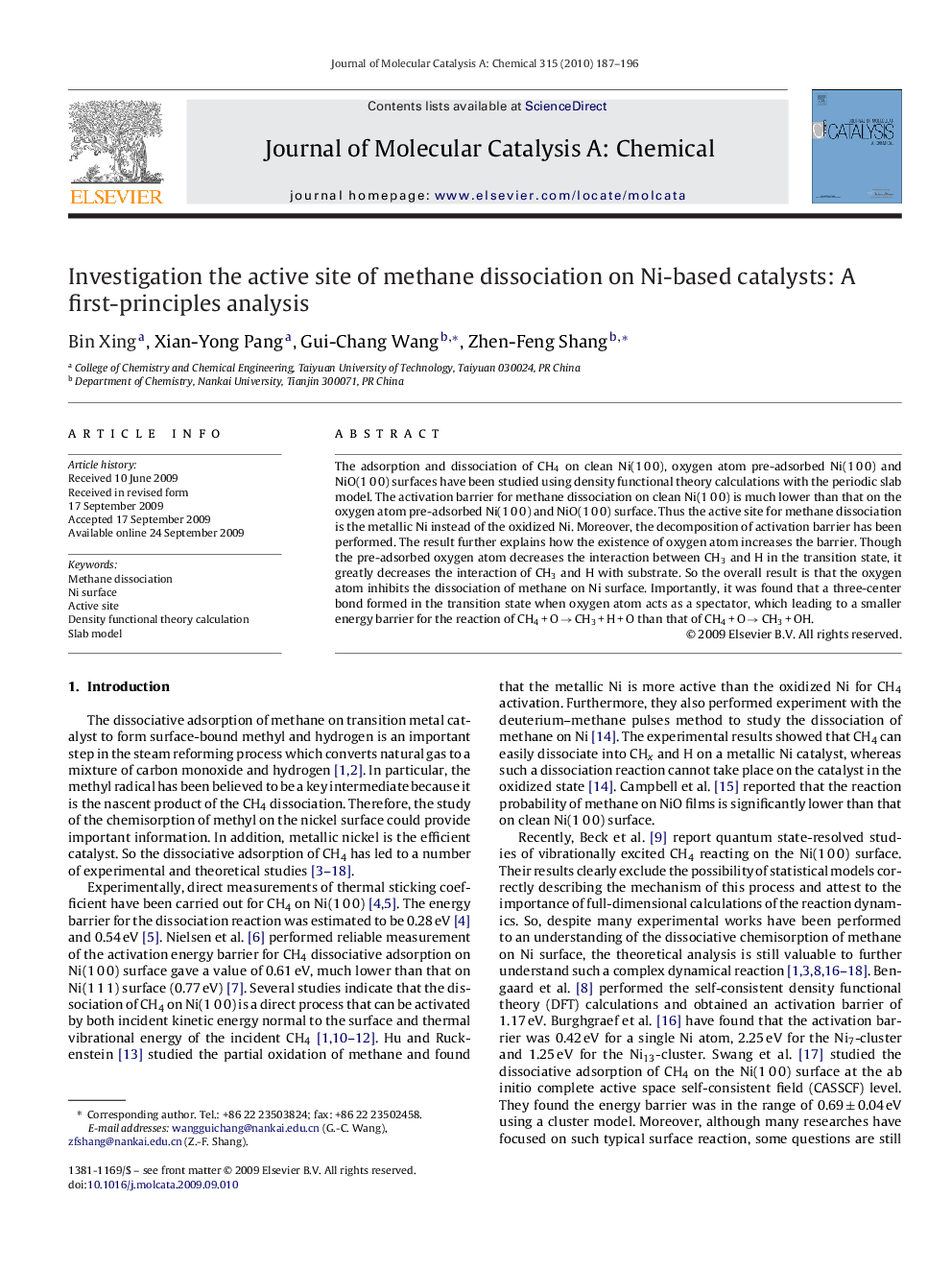| Article ID | Journal | Published Year | Pages | File Type |
|---|---|---|---|---|
| 67030 | Journal of Molecular Catalysis A: Chemical | 2010 | 10 Pages |
The adsorption and dissociation of CH4 on clean Ni(1 0 0), oxygen atom pre-adsorbed Ni(1 0 0) and NiO(1 0 0) surfaces have been studied using density functional theory calculations with the periodic slab model. The activation barrier for methane dissociation on clean Ni(1 0 0) is much lower than that on the oxygen atom pre-adsorbed Ni(1 0 0) and NiO(1 0 0) surface. Thus the active site for methane dissociation is the metallic Ni instead of the oxidized Ni. Moreover, the decomposition of activation barrier has been performed. The result further explains how the existence of oxygen atom increases the barrier. Though the pre-adsorbed oxygen atom decreases the interaction between CH3 and H in the transition state, it greatly decreases the interaction of CH3 and H with substrate. So the overall result is that the oxygen atom inhibits the dissociation of methane on Ni surface. Importantly, it was found that a three-center bond formed in the transition state when oxygen atom acts as a spectator, which leading to a smaller energy barrier for the reaction of CH4 + O → CH3 + H + O than that of CH4 + O → CH3 + OH.
Graphical abstractDFT results showed that the activation energy of methane decomposition on oxygen-pre-covered Ni(1 0 0) is larger than that of clean Ni(1 0 0), suggesting the activate site is the metallic Ni site. It was found that the presence of oxygen atom decreases the interaction of CH3 and H with substrate in TS, which inhibits the dissociation of methane on Ni surface.Figure optionsDownload full-size imageDownload high-quality image (72 K)Download as PowerPoint slide
